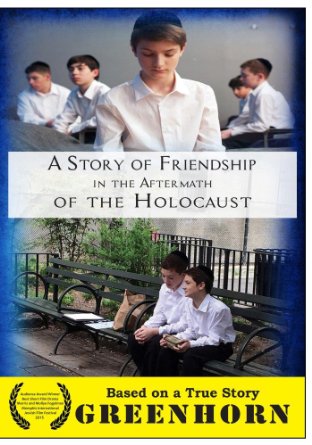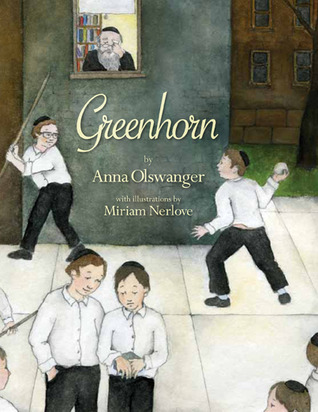 Anna Olswanger’s middle grade novel, GREENHORN (See Review), was made into an indie film. It’s a dream that many of us have, to see our story on the big screen. I asked her to tell us about the process.
Anna Olswanger’s middle grade novel, GREENHORN (See Review), was made into an indie film. It’s a dream that many of us have, to see our story on the big screen. I asked her to tell us about the process.
Anna’s introduction to the story
In 2014 I co-produced a short indie film adaptation of the novel. The film premiered at the Landmark NuArt Theatre in L.A. and at The Museum of Tolerance in New York. It was named the 2015 Audience Award Winner for Best Short Film Drama at the Morris and Mollye Fogelman International Jewish Film Festival in Memphis, and subsequently aired on public television in Memphis and Kentucky. In February, 2016, it was part of the Festival Internacional De Cine Judio en Mexico and will screen on March 27, 2016 at the International Children’s Film Festival at L.A.’s WonderCon.
TMW Media has just started distributing the film so that libraries and schools can purchase the DVD with public performance rights and show the film in classrooms. TMW is also distributing the film on Amazon to individual viewers. The film could be a tie-in to Holocaust Remembrance Day in May and International Holocaust Remembrance Day in January. The discussion guide for the film is online at the distributor’s site:
When did you decide that this book would make a good film?
I think every author hopes that her book will be optioned for film, and as a literary agent, I am used to getting my clients’ books into the hands of film producers. In the case of Greenhorn, I thought that the story had conflict, a strong climax, and a poignant resolution, the right elements for a good film. I just didn’t know how I would interest a producer in such a short book.
How did you find the contact to adapt it to film?
A potential client, who is a screenwriter, submitted a children’s book manuscript to me. It wasn’t a manuscript I could successfully represent, but we began a conversation about her work and she suggested that I show Greenhorn to a director she had worked with. I did contact him, and he liked the book. He asked me if I would like to co-produce the film with him.
As the author, what involvement did you have in the script? Did you have rights of approval/disapproval?
Because I was the co-producer, I was able to read the script and comment on it. My main concern was authenticity. I wanted to make sure that anyone familiar with that era of history during the 1940s would be convinced by the film.
Once the book goes to film, who is in charge? Where does the buck stop? When the book is adapted for film what is the author’s role? Nothing? Or do you have veto rights on decisions? For example, Ella Enchanted became a farce almost in movie format, a far cry from the book itself. Authors worry. What if their “baby” is misunderstood?
As a literary agent, I can confirm that the interpretation of the producer and screenwriter is of concern to authors. But unless you’re a big name author, you have to let go of your book when you option it. You’ve been paid money by someone who is excited by your story and has a vision of it as a film, and you have to trust that this person’s vision will enhance your book. If you don’t trust the producer, then don’t option the book. I think the situation is similar to being the author of a picture book text and having to let go when the illustrator comes on board. The picture book author has to let the illustrator have her own vision of the story. You can’t control what the illustrator sees. However, I was in the unique position of being both the author of the book and the co-producer of the film, so I was able to read the script and make suggestions for changes.
As the author, what surprised you about the film adaptation?
I remember from my days as a college theatre major how quickly and deeply friendships are formed among cast members, but it surprised me to see similar friendships develop among the boys who were in the cast of this film. It was fun to watch them play around during the times when we weren’t filming. See the wonderful photo of them after we filmed a scene.
The director/screenwriter, who happens not to be Jewish, recently told me he wants to develop a feature-length version of the story to flesh out the backstory of the children and their lives outside the yeshiva. It constantly surprises me how this story resonates with people, especially people who have no connection to the Holocaust or even Jewish history.
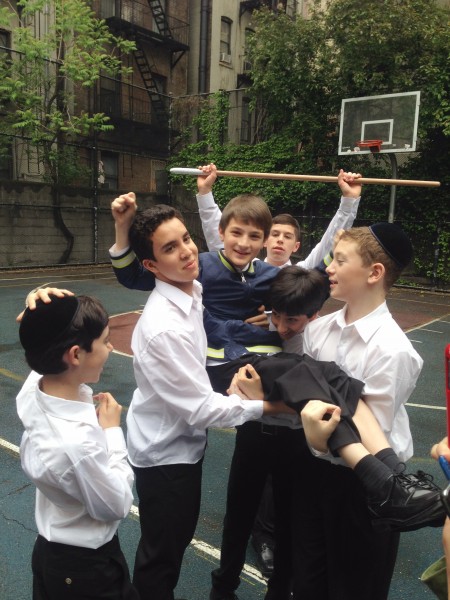
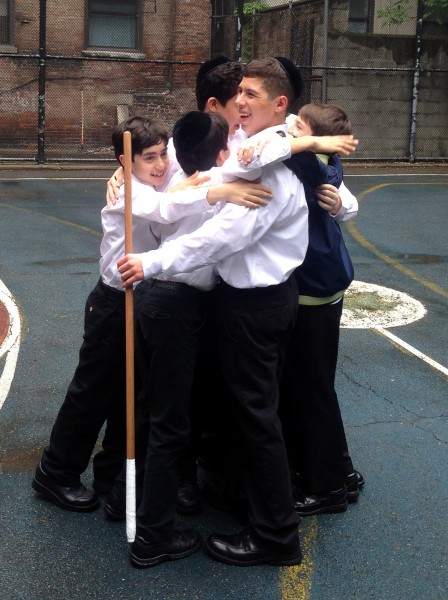
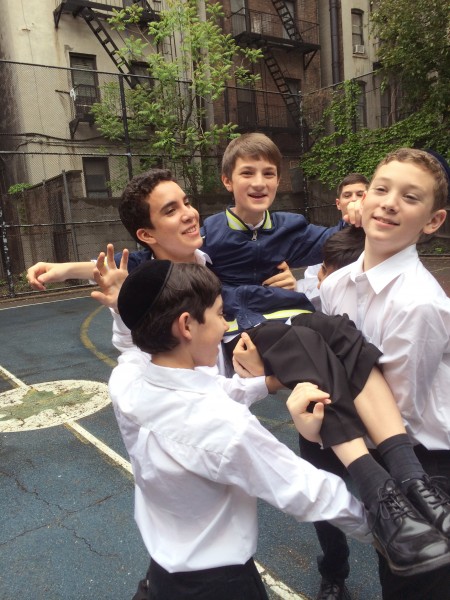
Will the process change how you write your next book?
I don’t think so, but the process has made me see how satisfying it is to see work in one medium take on a life in another medium.
Is there any money in all of this for you, the author?
Greenhorn is a small indie film, and as the co-producer I had to raise the funds to pay the actors, the production staff, the travel and hotel expenses for the crew during filming, props, hair dresser, catering, music, post sound design, and insurance. We didn’t budget in fees for the director or producers, or for me as the author, so there isn’t money in this for me. Even so, I would do it again.
Trailer for Greenhorn
If you can’t see this video, click here.
Darcy’s note about developing your own PR package:
For publicity purposes, Anna presented me with a complete package. She quickly answered some key questions about the process of creating a film from a novel. When she sent me the answers, she included interesting photos, details about where the film had aired, how to buy the movie on Amazon, links to a free discussion guide, suggestions on when it might be appropriate to view the film in an education setting, and a great movie trailer easily available on YouTube. If you’re doing publicity for a book or movie, this is a case study in how to do it right!
